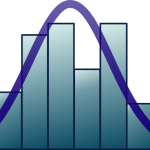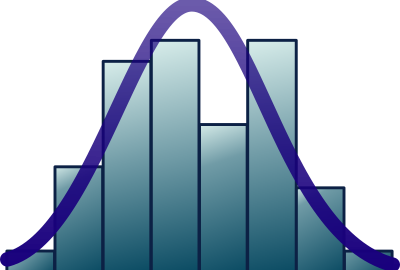Marine Ecology
The marine ecology course presents advanced topics regarding the ecology of marine biodiversity and ecosystems. It focuses on processes and patterns that are specific to the marine environment, beyond the basic ecology concepts taught at undergraduate level. It provides the student with a general overview on the ecology and evolution of biodiversity of marine organisms throughout the tree of life.
Students will learn about the many unique and distinct components of marine biodiversity, their life histories and evolutionary context. The course will highlight the constraints that are particular to life in a marine environment, with their consequences in the pelagic/benthic oceanic domain and on the seashore. In marine population ecology students will learn how to apply and interpret the various concepts and tools used to understand population variability in marine systems, persistence, dispersal and connectivity between populations. Students will study how relationships between species can regulate populations and shape communities, from pathogen/host to predator/prey, as well as competitive and symbiotic interactions between different components of marine biodiversity.
The study of the processes mediating marine species interactions will be comprised of habitat engineering, resource-dependent effects and chemical interactions. The diversity of food web structures in the oceans and the challenges that are specific to marine systems will be presented and discussed. Students will be trained in how to measure biodiversity with the aim of comparing communities in various habitats, and will be introduced into population dynamics.
- MARINE BIODIVERSITY – EVOLUTIONARY ECOLOGY:
- Marine biodiversity: from DNA to the global Tree of Life. Evolution in the oceans: changing the chemical composition of the planet. Two domains of marine life: Bacteria and Archaea and the eukaryotic diversification pathways from the combination of these.
- Temporal variability – from evolutionary to ecological time scales
- Spatial variability: geographical biodiversity variability and biodiversity hotspots - Discussion of recent case-studies and applications in marine conservation and management.
II – MARINE POPULATION ECOLOGY Population biology and life histories:
- Population variability in size and demography – consequences for population ecology
- Demographic consequences of marine life cycles, life histories, life cycles.
- Marine reproductive modes. Broadcast and spermcast mating, internal fertilizers and consequences for Allee effects.
- Clonal propagation versus sexual reproduction. Consequences for temporal stability, reproductive assurance and evolutionary potential.
- Inbreeding, outbreeding, fitness consequences. Optimal outcrossing distance. Local population adaptation.
- Intraspecific competition within and between populations, recruitment density barriers - Discussion of recent case-studies and applications in marine conservation and management.
- Marine connectivity
- Dispersal scales in space. Causes and consequences of planktonic dispersive stages and directly developing marine propagules.
- Local versus supply-side recruitment and its implications for Marine Protected Areas.
- Marine metapopulations. Seascape genetics.
- Dispersal scales in time, arrested development and long-term persistent stages. Biological rhythms.
- Marine barriers to connectivity. Oceanographic factors, the ghost of history past, prior colonisation effects.
- Population biogeography, processes behind the patterns.
- Dispersal of marine invasive species. Tracking sources and paths.
- Discussion of recent case-studies and applications in marine conservation and management.
III- MARINE COMMUNITY ECOLOGY
- Temporal dynamics of communities
- Facilitation, foundation species, habitat structuring species.
- Assemblage dynamics, species successions, seasonal variations.
- Community stability, resilience, resistance. Intermediate disturbance hypothesis.
- Spatial and temporal patterns in biodiversity and function of marine communities. Community biogeography, processes behind the patterns.
- Discussion of recent case-studies and applications in marine conservation and management. Marine biotic interactions
- Symbiosis: mutualism, commensalism, amensalism, pathogens & parasistism. Marine examples, keystone effects (e.g., Symbiodinium, chemosynthesis), co-evolution.
- Interspecific competition. Drivers and consequences on pelagic versus benthic habitats.
- Herbivory and predation. Keystone roles in controlling dominance and competitive interactions marine ecosystems driven by species interactions.
- Marine chemical communication and defences mediating biotic interactions.
- Discussion of recent case-studies and applications in marine conservation and management.
- Marine food webs, energy and matter fluxes
- Primary Production Photosynthesis: Light, Inorganic nutrients; Seasonal (temporal) trends in primary production Chemosynthesis Global distribution of primary production in the oceans.
- Secondary Production and the Degradation of Organic Matter Respiration Herbivory and predation Microbes and their role in marine systems: decomposition and recycling; seasonal cycles of production and consumption and microbial loops; the supply of organic matter to deep sea heterotrophic systems.
- Specific Topics in Food Web ecology: diversity of food web structures in the marine ecosystems; food web roles of microbes in the sea: Autotrophic, Heterotrophic and Mixotrophic microbes; importance of viruses; origin and transformation of Dissolved Organic Matter (microbial loop and pelagic trophic net); top-down and bottom-up effects; trophic cascades; discussion of recent case-studies and applications in marine conservation and management.
Final Competencies
1 This course will provide students with an understanding of the main questions, approaches and leading hypotheses in marine ecology that are specific to marine organisms, with their distinct variety of functional and taxonomic groups, life histories, colonisation modes and functional interactions. Interpreting patterns and processes in marine ecology.
2 Students will acquire skills in designing and interpreting approaches to understand questions in the diversity of topics within marine ecology and their implications for marine biodiversity management and conservation.
Further course information can be found here: https://studiekiezer.ugent.be/studiefiche/en/C003874/2022





